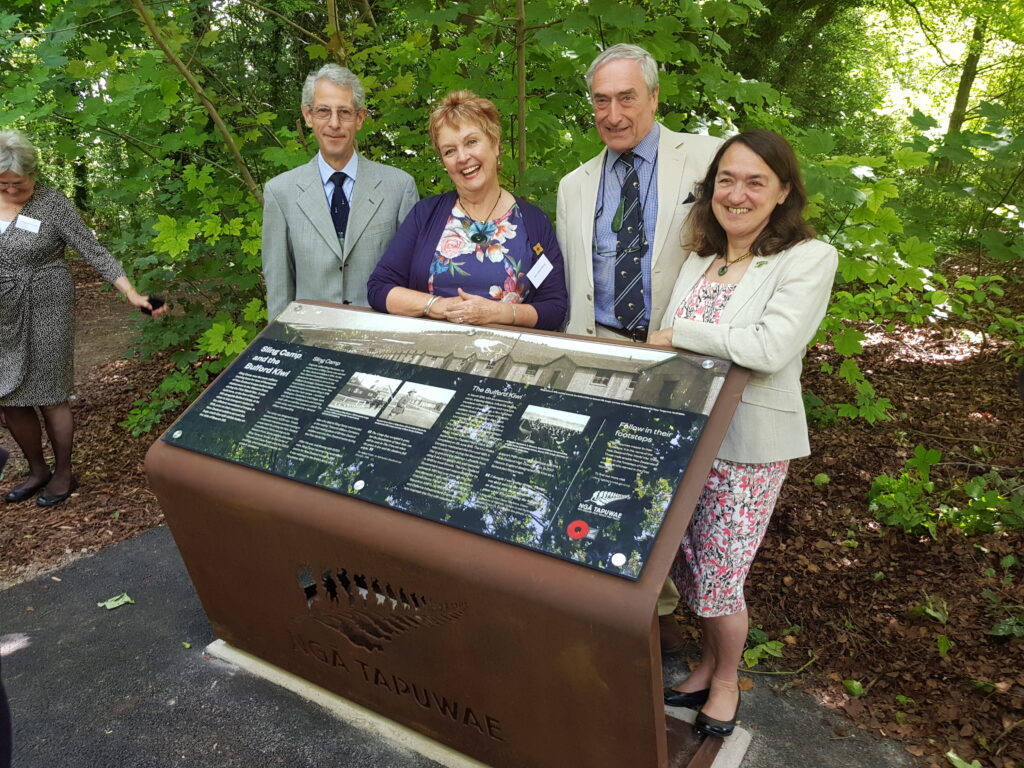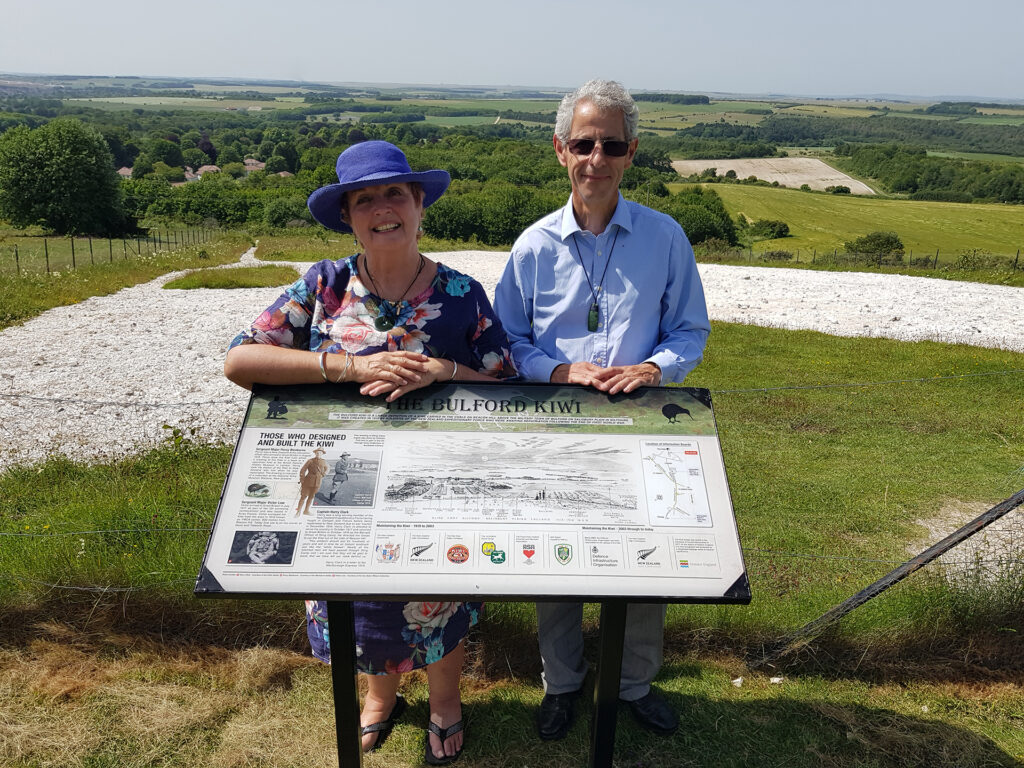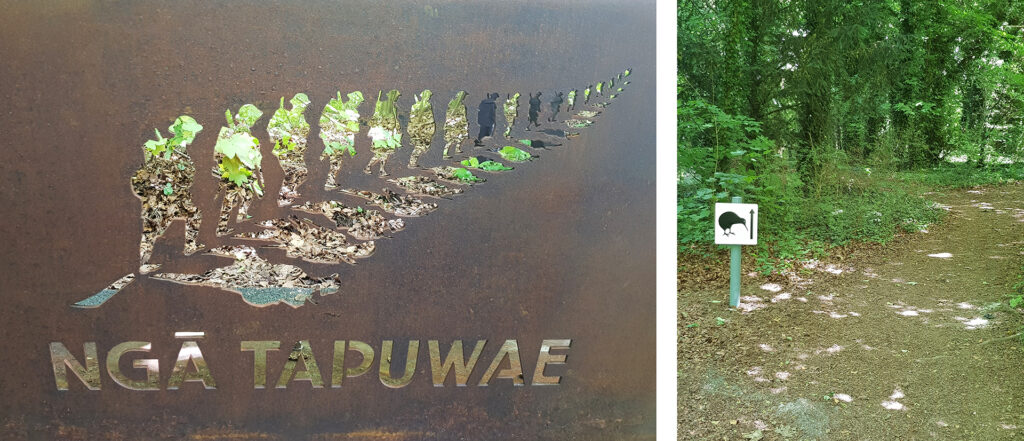ANZAC Day commemorates the courage and sacrifices of those who have fought for our country in wars, conflicts, and peacekeeping missions – with a special focus on the tragic Gallipoli campaign of WWI. It is an occasion to come together and pay tribute to those who gave their lives, making sure that we continue to honour their enduring legacy.
NZMS has worked on a number of projects to preserve and protect cultural heritage artefacts related to ANZAC Day, including digitising troopship magazines, hospital ship albums, and naval artwork. Digitising these items ensures that future generations will have access to this important material and appreciate the significance of ANZAC Day for our nation’s history and identity.
A project that has remained close to our hearts over the years is the one we undertook for New Zealand author Colleen Brown, in relation to her book, The Bulford Kiwi: The Kiwi We Left Behind.

The book recounts a fascinating yet little-known tale from WWI about New Zealand soldiers stationed at Sling Camp in Southern England during 1919, eagerly anticipating their homecoming after the war’s end. Unfortunately, a riot eventually broke out at the camp because of the poor conditions including overcrowding, harsh weather, and a deadly influenza epidemic. In an effort to boost morale, officials proposed the idea of carving a 130-meter-tall kiwi into the nearby hill. It became a symbol that the soldiers took great pride in and served as a meaningful connection to New Zealand. It represented all the servicemen who had been stationed at Sling Camp, especially those who never made it home.
A few years ago, we released a blog detailing our work with Colleen, and in commemoration of ANZAC Day, we felt it was appropriate to reshare some key highlights from that post as well as provide an update – both in terms of the Bulford Kiwi and Colleen’s new work!
In 2015, Colleen approached us with the task of digitising a bundle of photographic negatives linked to the history of the Bulford Kiwi and Sling Camp. Over the years leading up to her book’s release, we were thrilled to share in Colleen’s joy as she unearthed new photos, maps, and plans, working alongside her to digitise and produce publication-ready images. Below is a brief excerpt from our blog, which outlines our involvement and Colleen’s in-depth research – it provides a glimpse into her process of uncovering and illuminating this remarkable piece of New Zealand’s history.

“Once the negatives were restored, I had beautiful black and white compositions of uniformed officers posing in Sling Camp with the kiwi behind them, unique little snapshots of life back in 1919 taken through the viewfinder of a person intimately involved with the construction of the giant bird. For me, it was incredible that the detailed work on the negatives, taking away their blemishes, revealed clear precise depictions of that era. One of those photos now graces the cover of my book. Until then the only photographs I had to go on were the official marketing photograph taken in 1919 by the Kiwi Polish Company and a smattering of other photographs stored in libraries. Harry’s negatives – pure gold.
“Being able to have all the photographs restored was for me a mark of respect for the men who had endured so much throughout WW1. These mementos are all we have left of them along with their letters and medals. To be able to achieve the very high-quality digital images with negatives and photographs that were between 80 to 100 years old was impressive.
“I can’t thank Alison and her team enough. When I saw what they had done with the raw material I was very moved. People who read the book also comment on those images and illustrations. Now we can truly say, ‘We will remember them.’”
We recently got in touch with Colleen to catch up on her endeavours over the past few years and to learn about her involvement in the 100th commemoration of the Bulford Kiwi. Following the publication of the Bulford Kiwi book, Colleen has authored two children’s books. The first, titled Elvie the Sheep, recounts the charming story of a sheep who resided in Mrs Pollock’s (Colleen’s aunt) backyard in Kilbirnie.
Her latest publication, Violet’s Scarf, narrates the incredible true story of Violet Cloughley, a young girl from Riverton, during WW1. Violet, only 8 years-old, wanted to assist soldiers fighting overseas so she decided to knit a scarf. The story revolves around the hand-knitted scarf that Violet sent away as a gift for a soldier which remarkably ended up being delivered to her own brother, George, who was fighting overseas. You can find out more about this heartwarming tale in Colleen’s Nine to Noon interview with Kathryn Ryan on RNZ or in Dionne Christian’s Kete review.
We were also eager to learn about Colleen’s participation in the 100th Commemoration of the Bulford Kiwi held in June 2019. The event was a poignant tribute to the bravery and sacrifice of New Zealand soldiers during WWI. It also recognised the ingenuity and resourcefulness of the Kiwi soldiers who constructed the sculpture amid the difficulties of war and in a foreign land.

Below is Colleen’s account of the commemoration:
“It was a remarkable event. Dignitaries from the British and New Zealand Armies, and the New Zealand High Commission were present, along with a host of people who had helped me make the book – The Bulford Kiwi: The Kiwi We Left Behind a reality. For me, being there marked the completion of an incredible journey. On my five-year quest to get to the nitty-gritty of how this astonishing chalk bird came to be dug into the side of Beacon Hill, I met the most wonderful people, both here in NZ and in the UK.
“Standing in The Crescent at Bulford, seeing the signposts guiding people along the path to the base of the hill where the Kiwi lies, and looking at the huge Nga Tapuwae legend detailing the story of the construction of the Kiwi, that I had written, gave me the most profound pleasure. There is this eerie feeling you get when you stand at the base of the hill, right where the edge of Sling Camp would have stood. If it’s quiet you can almost imagine you can hear those WW1 soldiers’ voices singing as they march, or grumbling as they line up for chores. They are a presence.

“The Bulford Guide captures it nicely; “The camp they occupied is gone, but the foundations of their huts can still be seen in the Crescent when the grass is low and the shadows fall aright.” Walking to the top of Beacon Hill and again seeing the storyboards that the British Army had asked me to write – again brought home the camaraderie, the shared histories between NZ and the United Kingdom.
“Most importantly, the entire day in 2019, gave respect to the men who had fought, waited for ships to take them home, had rioted, and been set a task to dig a New Zealand icon out of the green pastures above Sling Camp. Possibly those men never gave the Kiwi another thought – but maybe they did, and just maybe they had some pride in that emblem that represented the ultimate sacrifice so many men gave so others could enjoy freedom and peace. The words of Danny Fisher inscribed into the plaque at the top of Beacon Hill by the head of the Kiwi, says it all – ‘To the old soldiers in the new country from the young soldiers in the old country. Our link is carved forever in the timeless hills of Salisbury Plain.’”

We were delighted to hear Colleen’s firsthand account of this significant event, which provided a meaningful opportunity to honour the soldiers who served in WWI and celebrate the Bulford Kiwi’s role in establishing a sense of camaraderie and a connection to New Zealand. Collaborating with Colleen to digitise images for The Bulford Kiwi: The Kiwi We Left Behind was an inspiring experience, and we continue to be moved by the impact the book has had over the last few years. It is an evocative reminder of the profound impact of war on society and pays tribute to those who have selflessly served our country.
